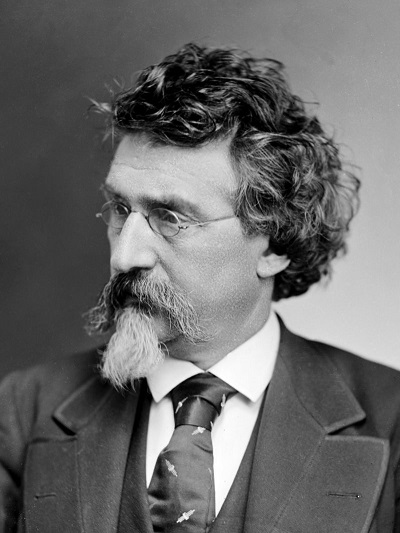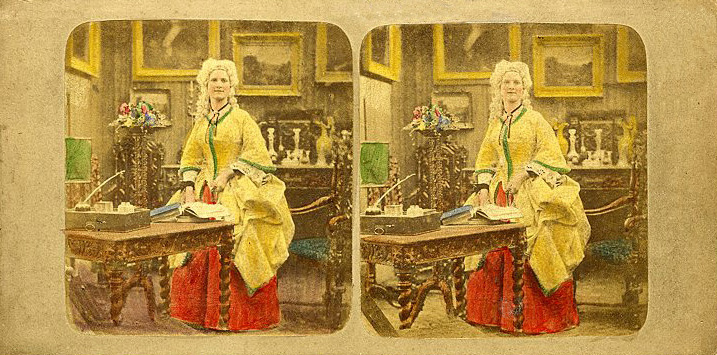Stereoscopic cards
The first stereoscopes
Daguerreotypy was not the only early photographic process. The Englishman William Talbot invented a different method for making images on light-sensitive paper. The method was called calotype. It was a negative-positiv e process which would further develop into analogue (non-electronic) photography.
The next decennium witnessed renewed efforts to perfect both processes. In 1851 Frederick Scott Archer made an announcement in English press that he had been working on a new process he called ‘wet collodion’ method. His idea was to use a glass plate covered with a thin layer of viscous material named collodion. It was important that all the operations, starting from making the sheet and ending by placing it in a fixed position, were to be performed before collodion set. Darkroom (photography lab) became the inevitable part. However, the ‘wet and clumsy’ process had several advantages. The photographer obtained a negative (latent) image from which he could make a positive one on opaque backgrounds (such images would be called ambrotypes or tintypes). The method also used cheaper and more available materials, than were needed for daguerreotypy, and allowed for larger sheets literally widening the horizons of photography.
Already by 1855 the ‘wet collodion’ process left daguerreotypy well behind.
The American Civil War opened new prospects for photography. The first one to see them was Mathew Brady, a well-known photographer who had a couple of prosperous photo studios in Washington and New York. He was the one who published the Gallery of notable Americans – a series of albums with photos of renowned citizens. Brady used his government connections to get a permission to send a number of his photographers to the Front line. Mobile darkrooms were arranged in horse-drawn carriages and the ‘newly-hatched’ photo reporters were sent to document the warfare. Although they likely saw the battles with their own eyes or were very close to them, photographers could not convey the heat of the action because the ‘wet collodion’ process required long exposure times. The resulting photographs lacked battle dynamics.
Yet, the pictures of ruins and fields littered with dead bodies and left behind machinery showed the ghastly face of war very well – with the multiple canons, war ships, canon-balls and canister shot.

Brady was going to make and sell pictures that could be viewed in a stereoscope. At that time stereoscopes were very popular in the United States. People liked to watch cards in them. Stereoscopic or stereo cards are two images, placed side by side – one for the left eye and the other for the right one. If you look at them through a stereoscope, it creates an illusion of relief. The new photography process came in handy. It was easy to make stereo cards with the method. All the photographer had to do was take a picture, move the equipment 6,5 cm and take the other shot. Soon the world saw special stereo cameras allowing for the two exposures to happen simultaneously.
Making stereoscopic cards turned out to be just as profitable as portrait photography in the USA. The country became inundated with images of beautiful landscapes and scenery, well-known buildings, monuments and different sights. Those pictures were made for the mere sake of spreading information and fun. But there were photographers who worked with special care. They skillfully combined lighting, composition and shooting methods to obtain the best possible results. There were millions of stereo cards produced back then. Many of the preserved ones serve as excellent illustrations of the country’s life in the period of its establishment.
See also: Daguerreotype
